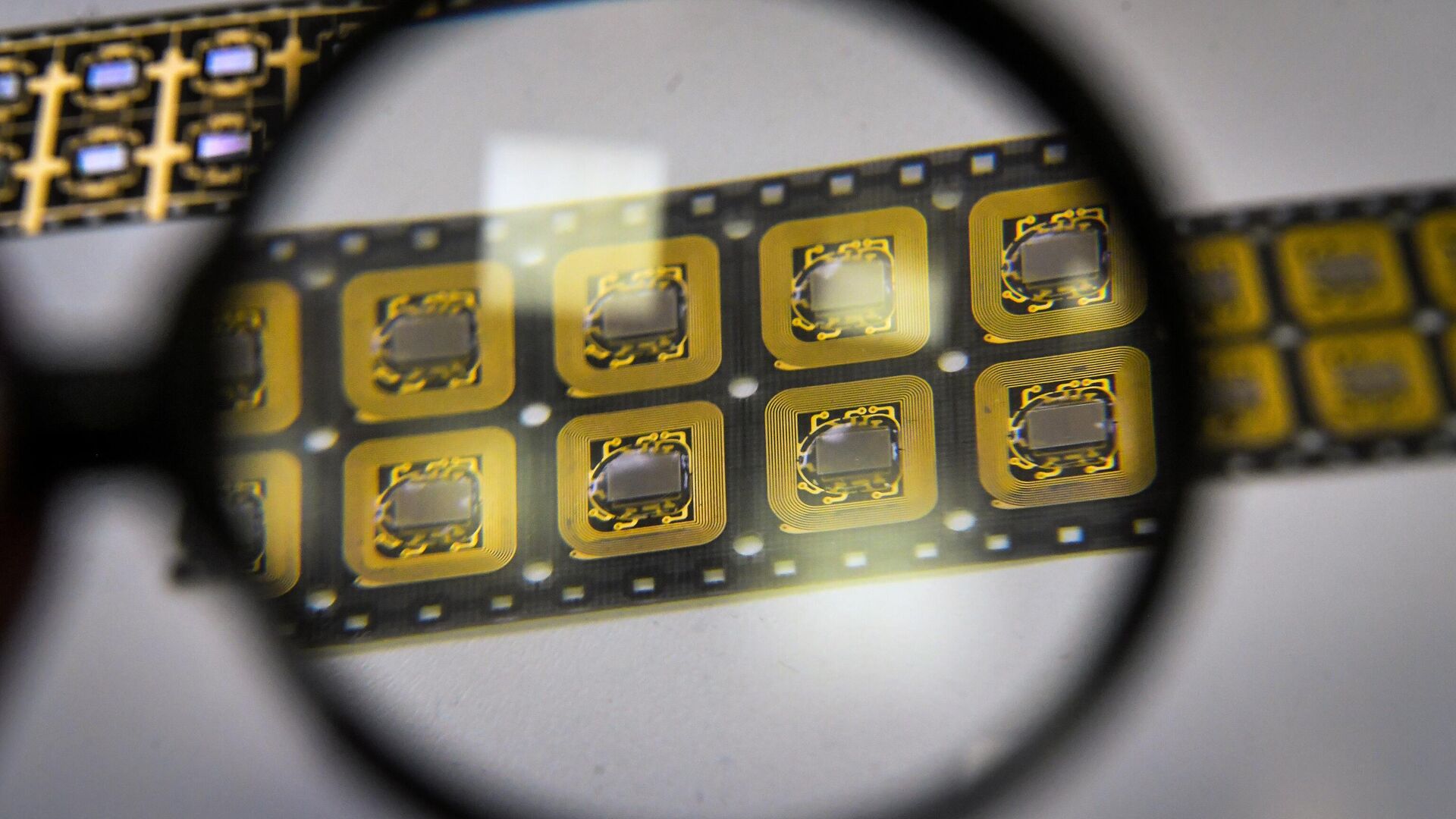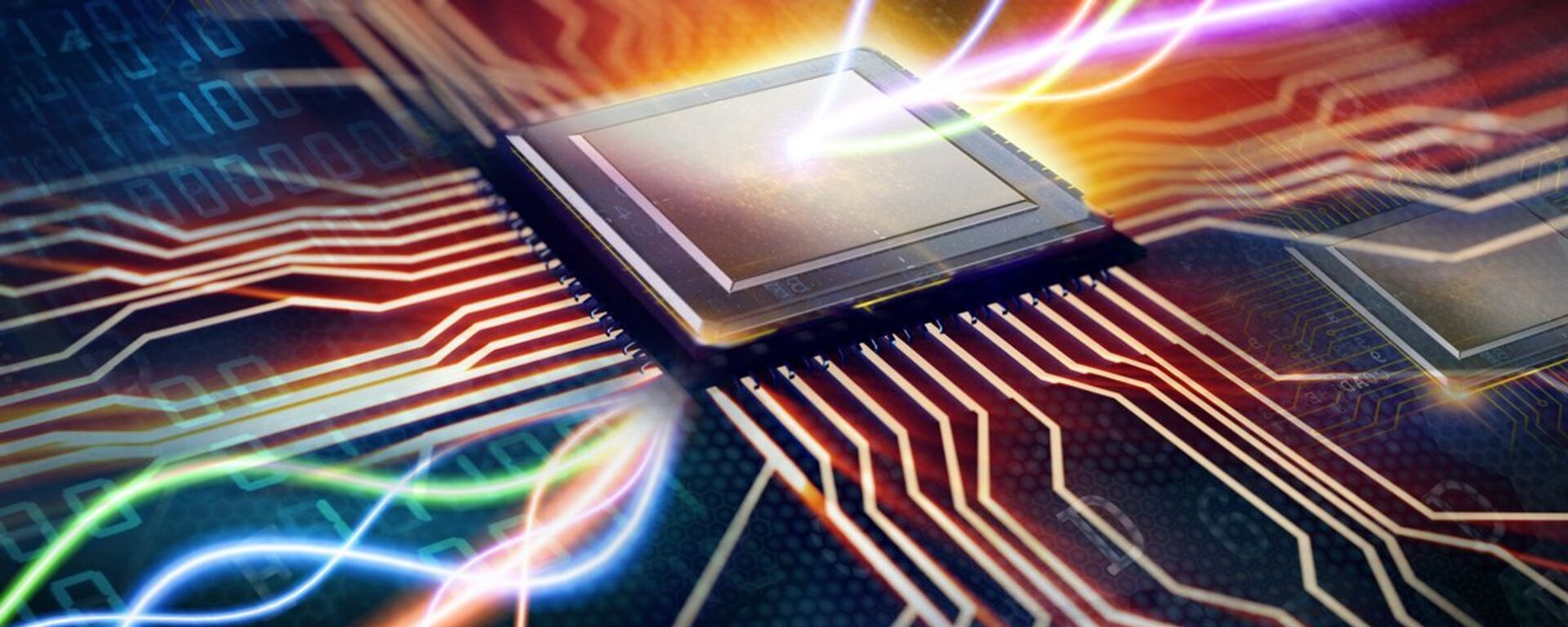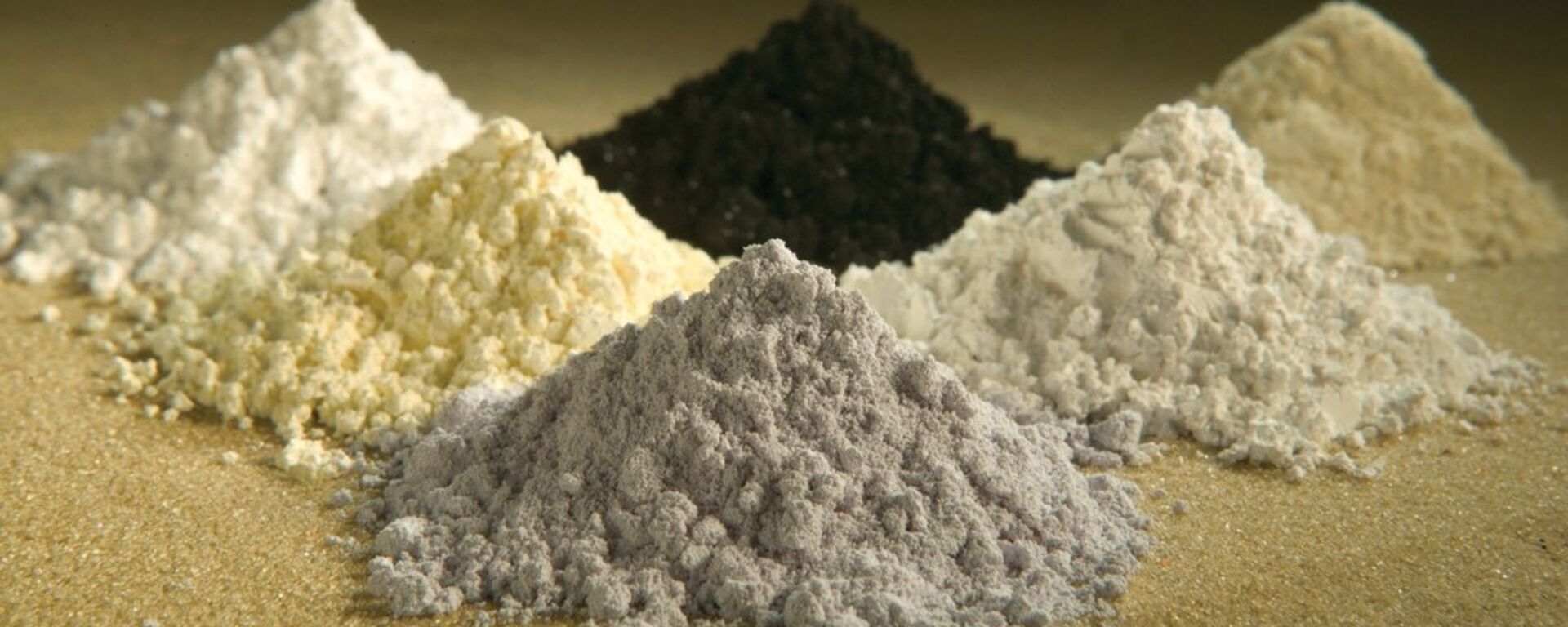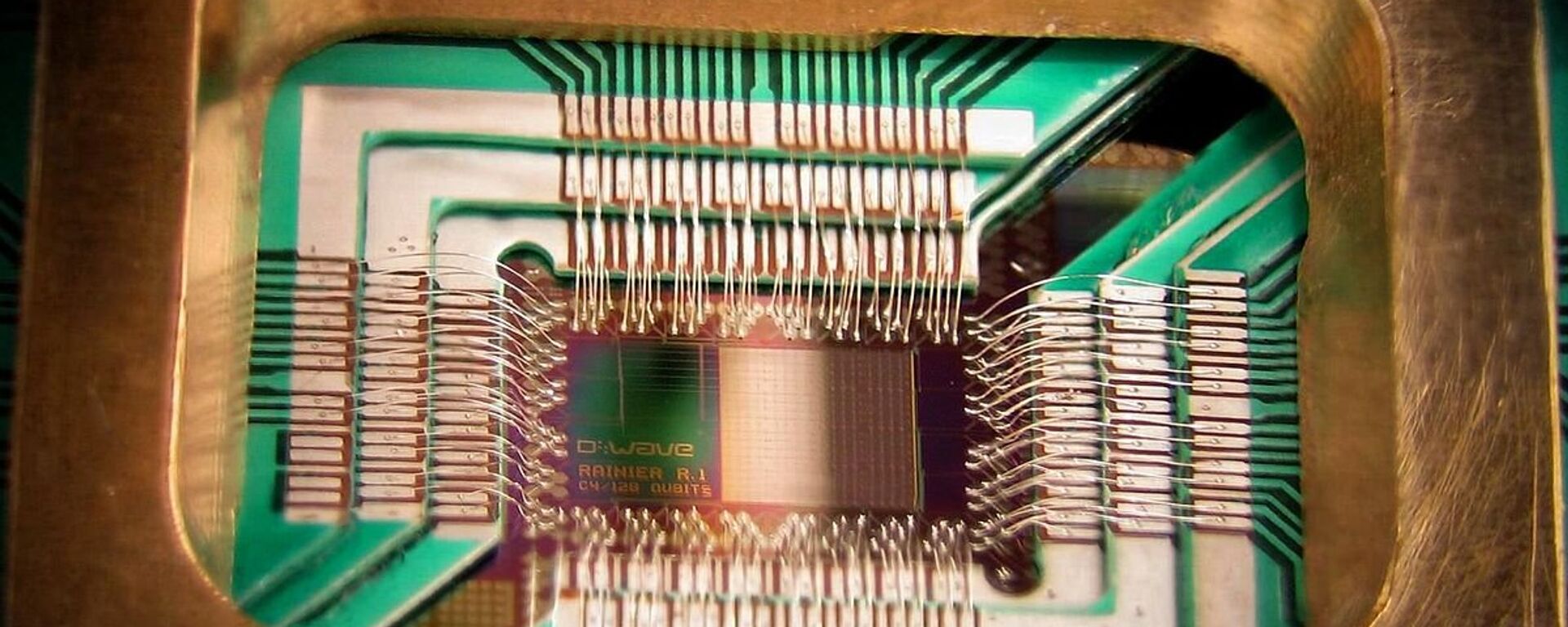https://sputnikglobe.com/20230807/what-materials-are-used-to-make-microchips-1112443836.html
What Materials are Used to Make Microchips?
What Materials are Used to Make Microchips?
Sputnik International
Microchips have become a vital part of our daily life - being used in a vast variety of platforms, from smartphones to planes. What are the tiny chips made of and why are uninterrupted supplies of these materials so important?
2023-08-07T16:48+0000
2023-08-07T16:48+0000
2023-08-07T16:51+0000
china
taiwan
europe
russia
us
microchip
semiconductors
sputnik explains
science & tech
tech giants
https://cdn1.img.sputnikglobe.com/img/07e6/0a/07/1101597496_0:131:3073:1859_1920x0_80_0_0_5d73d70284abf76efcfaf19b3ee5e473.jpg
As China's ban on gallium and germanium exports – two critical elements for making semiconductor chips – came into force last week in the wake of US attempts to curb Beijing's semiconductor industry, international experts and politicians raised the alarms over growing risks for global supply chains.China produces upwards of 80% of the world’s gallium, and 60% of its germanium and from now on has obligated exporters to seek special licenses to get the elements out of the country. The move is seen as a response to Washington's CHIPS and Science Act of 2022 which curtailed exports of high-end microchips and technology to China. What's more, the US persuaded its allies to join the initiative in order to contain the development of China's microelectronics, AI and supercomputing.To understand what's behind growing concerns and why the US-led sanctions spree is threatening to shatter the global hi-tech industry, Sputnik has figured out what chips are actually made of.What Does Semiconductor Mean?Semiconductors earned their name for acting as something in-between "conductors" and "insulators." Conductors are materials that allow electrical conductivity, while insulators prevent it. Having crystalline structures, semiconductors conduct electricity under special conditions, which allows a control of how, when, and where electricity flows. This feature makes them especially important for electronic devices.What are the Most Used Semiconductor Materials?Silicon, germanium, gallium arsenide, and indium phosphide are used to make microchips, also known as semiconductors, semis or chips.Silicon and germanium are two metalloids – having properties of a metal and a nonmetal – which are used as "semiconductors".Germanium was one of the earliest semiconductor materials used. It's famous for being more resistant to cosmic radiation than silicon which makes it especially useful for space technologies such as solar cells.Gallium arsenide (GaAs) is a semiconductor compound, built from the elements gallium and arsenic, used as silicon substitute for the electronics industry. Gallium is a soft, silvery-white metal, similar to aluminum. Arsenic is a metalloid used in various alloys and compounds.Indium is a soft, malleable metal with a brilliant luster. Its compound with phosphorus, indium phosphide, is a binary semiconductor which is used in lasers, optoelectronic components, high-speed electronics, and photovoltaics.What Type of Silicon is Used in Microchips?Silicon used in computers is produced from sand, the second most abundant element on earth. Still, manufacturers use a specific type of sand called silica sand. It is made up of about 95% silicon dioxide.What Metals are Needed for Microchips?Besides gallium and indium – two soft metals – manufacturing of compound semiconductor devices also requires precious metals such as gold and platinum. Aluminum and its alloys are widely used for wiring in microchips.Why is Gold Used in Microchips?Gold is chosen due to its high electrical conductivity and resistance to corrosion necessary for superior performance.How Much Gold is Used in Microchips?According to some estimates, most computers contain one-third of a gram of gold. Some experts say that one can extract 5 troy ounces or 155.5 g of gold from one ton of PC circuit boards.Where are Materials for Microchips Mined?Microchips rely on silicon and rare earth elements (REE) making the mining of the latter especially important. Presently, China remains the world's leader - boasting 60% of global production of rare earths and 85% of processing capacity.The biggest rare earth mines are located in China. The Bayan Obo deposit in Inner Mongolia, north China, contains about 40 million tons of REE reserves, according to some estimates. All in all, the People's Republic has 44 million tons of REE in reserves and accounts for 140,000 tons of mine production annually.Vietnam and Brazil have the second and third largest reserves, respectively, but their mine production is one of the lowest (about 1,000 tons annually). Russia is ranked the third in terms of REE reserves (12 million tons) but seventh in terms of production. The US mines about 38,000 tons of rare earths annually but its estimated reserves amount to 1.5 million tons.Meanwhile, Taiwan is the world's leader in terms of raw semiconductor manufacturing. The Taiwan Semiconductor Manufacturing Co. produces roughly 50% of the world's semiconductors. Thus, China and the island of Taiwan, considered by Beijing as the People's Republic inalienable part, are currently indispensable for the global semiconductor market.What Gases are Used in Semiconductor Manufacturing?So-called "noble" or inert gases, including neon, argon, helium, xenon and krypton, are vital components used in semiconductor manufacturing.Inert gases don't react with other elements which make them instrumental during the semiconductor production as they help avoid undesired chemical reactions. All in all, over 30 different gases are required throughout the process.For instance, argon gas is used to protect silicon crystals from reactions with oxygen or nitrogen during its growth. In its liquid form, argon is used to clean some smallest chips.For its part, neon is the key component of excimer laser gas used in semiconductor photolithography, the process in which electric circuits are engraved onto wafers.Helium is used to control and prevent various chemical reactions during chip production.Who is the Largest Supplier of Noble Gases?Russia and Ukraine used to provide about 50-55% of the supply of inert gases for the world market before the conflict. The two accounted for about 40-50% of the global supply of neon, and 25-30% of xenon and krypton, as per John Raquet of Spiritus Consulting. At times, the countries' export of neon has been as high as 70%, according to international analysts. Alone, Russia accounts for 30% of the global supply of three noble gases - neon, krypton and xenon.Ukraine's main production facilities were located in the cities of Mariupol and Odessa. Mariupol became part of Russia in the aftermath of the referendum in 2022. Ukraine's production of noble gases has been disrupted due to the West's fanning of the conflict since late March 2022, when Moscow and Kiev reached a preliminary peace agreement which was then derailed by the US and the UK. For its part, Russia imposed restrictions on supplies of noble gases, including neon, argon and helium, to "unfriendly states", i.e. those who joined sweeping unilateral sanctions against Russia spearheaded by Washington. As a result, the price of noble gases went up globally.Are Microchips Hard to Make?The microchip manufacturing process is not an easy one and involves hundreds of steps. According to some estimates, it can take up to four months from design to mass production of a chip. The production of most complex chips is extremely complicated and expensive. Meanwhile, the ongoing geopolitical changes have made the process more difficult and costly.The COVID pandemic hit the industry and supply chains resulting in the global shortage of chips. To add insult to injury, the collective West is creating additional curbs for the industry by slapping sanctions on China and Russia, thus stripping semiconductor producers of much-needed rare earths and inert gases.
https://sputnikglobe.com/20230803/chinas-rare-earth-metals-ban-hits-us-chip-trade-restrictions-where-it-hurts-1112340326.html
https://sputnikglobe.com/20230704/has-china-just-checkmated-the-us-by-banning-rare-earth-exports-1111663181.html
https://sputnikglobe.com/20230801/chinas-rare-earths-ban-may-sink-us-microchip-manufacturing-ambitions-1112322954.html
https://sputnikglobe.com/20230519/in-aurum-we-trust-which-countries-have-the-biggest-gold-reserves-1110466101.html
https://sputnikglobe.com/20230721/taiwanese-semiconductor-giant-delays-arizona-plant-production-amid-us-china-chip-race-1112027823.html
https://sputnikglobe.com/20230806/us-policy-to-curb-chinese-chip-industry-could-backfire---south-korean-lawmaker-1112417681.html
https://sputnikglobe.com/20230527/beijing-seoul-agree-on-semiconductor-industry-chains-amid-china-us-chip-race-1110627904.html
china
taiwan
russia
ukraine
Sputnik International
feedback@sputniknews.com
+74956456601
MIA „Rossiya Segodnya“
2023
News
en_EN
Sputnik International
feedback@sputniknews.com
+74956456601
MIA „Rossiya Segodnya“
Sputnik International
feedback@sputniknews.com
+74956456601
MIA „Rossiya Segodnya“
what materials are used to make microchips, what materials are used to make semiconductors, how to make microchips, microchips, semiconductors, what materials are needed to make computer chips, what material do you use to make chip bags with cricut, what materials are microchips made of, materials used in microchips, what metals are used in microchips, where are materials for microchips mined, what metals are needed for microchips, what minerals are needed to make semiconductors
what materials are used to make microchips, what materials are used to make semiconductors, how to make microchips, microchips, semiconductors, what materials are needed to make computer chips, what material do you use to make chip bags with cricut, what materials are microchips made of, materials used in microchips, what metals are used in microchips, where are materials for microchips mined, what metals are needed for microchips, what minerals are needed to make semiconductors
What Materials are Used to Make Microchips?
16:48 GMT 07.08.2023 (Updated: 16:51 GMT 07.08.2023) Microchips have become a vital part of our daily life - being used in a vast variety of platforms, from smartphones to planes. What are the tiny chips made of and why are uninterrupted supplies of these materials so important?
As China's ban on
gallium and
germanium exports – two critical elements for making
semiconductor chips –
came into force last week in the wake of US attempts to curb Beijing's semiconductor industry, international experts and politicians raised the alarms over growing risks for global supply chains.
China produces upwards of 80% of the world’s gallium, and 60% of its germanium and from now on has obligated exporters
to seek special licenses to get the elements out of the country. The move is seen as a response to Washington's CHIPS and Science Act of 2022 which curtailed exports of high-end microchips and technology to China. What's more, the US persuaded its allies to join the initiative in order
to contain the development of China's microelectronics, AI and supercomputing.
To understand what's behind growing concerns and why the US-led sanctions spree is threatening to shatter the global hi-tech industry, Sputnik has figured out what chips are actually made of.
What Does Semiconductor Mean?
Semiconductors earned their name for acting as something in-between "conductors" and "insulators." Conductors are materials that allow electrical conductivity, while insulators prevent it. Having crystalline structures, semiconductors conduct electricity under special conditions, which allows a control of how, when, and where electricity flows. This feature makes them especially important for electronic devices.
What are the Most Used Semiconductor Materials?
Silicon, germanium, gallium arsenide, and indium phosphide are used to make microchips, also known as semiconductors, semis or chips.
Silicon and germanium are two metalloids – having properties of a metal and a nonmetal – which are used as "semiconductors".
Germanium was one of the earliest semiconductor materials used. It's famous for being more resistant to cosmic radiation than silicon which makes it especially useful for space technologies such as solar cells.
Gallium arsenide (GaAs) is a semiconductor compound, built from the elements gallium and arsenic, used as silicon substitute for the electronics industry. Gallium is a soft, silvery-white metal, similar to aluminum. Arsenic is a metalloid used in various alloys and compounds.
Indium is a soft, malleable metal with a brilliant luster. Its compound with phosphorus, indium phosphide, is a binary semiconductor which is used in lasers, optoelectronic components, high-speed electronics, and photovoltaics.
What Type of Silicon is Used in Microchips?
Silicon used in computers is produced from sand, the second most abundant element on earth. Still, manufacturers use a specific type of sand called silica sand. It is made up of about 95% silicon dioxide.
What Metals are Needed for Microchips?
Besides gallium and indium – two soft metals – manufacturing of compound semiconductor devices also requires precious metals such as gold and platinum. Aluminum and its alloys are widely used for wiring in microchips.
Why is Gold Used in Microchips?
Gold is chosen due to its high electrical conductivity and resistance to corrosion necessary for superior performance.
How Much Gold is Used in Microchips?
According to some estimates, most computers contain one-third of a gram of gold. Some experts say that one can extract 5 troy ounces or 155.5 g of gold from one ton of PC circuit boards.
Where are Materials for Microchips Mined?
Microchips rely on silicon and rare earth elements (REE) making the mining of the latter especially important. Presently, China remains the world's leader - boasting 60% of global production of rare earths and 85% of processing capacity.
The biggest rare earth mines are located in China. The Bayan Obo deposit in Inner Mongolia, north China, contains about 40 million tons of REE reserves, according to some estimates. All in all, the People's Republic has 44 million tons of REE in reserves and accounts for 140,000 tons of mine production annually.
Vietnam and Brazil have the second and third largest reserves, respectively, but their mine production is one of the lowest (about 1,000 tons annually). Russia is ranked the third in terms of REE reserves (12 million tons) but seventh in terms of production. The US mines about 38,000 tons of rare earths annually but its estimated reserves amount to 1.5 million tons.
Meanwhile, Taiwan is the world's leader in terms of
raw semiconductor manufacturing. The Taiwan Semiconductor Manufacturing Co. produces roughly 50% of the world's semiconductors. Thus, China and the island of Taiwan, considered by Beijing as the People's Republic inalienable part, are currently indispensable for the global semiconductor market.
What Gases are Used in Semiconductor Manufacturing?
So-called "noble" or inert gases, including neon, argon, helium, xenon and krypton, are vital components used in semiconductor manufacturing.
Inert gases don't react with other elements which make them instrumental during the semiconductor production as they help avoid undesired chemical reactions. All in all, over 30 different gases are required throughout the process.
For instance, argon gas is used to protect silicon crystals from reactions with oxygen or nitrogen during its growth. In its liquid form, argon is used to clean some smallest chips.
For its part, neon is the key component of excimer laser gas used in semiconductor photolithography, the process in which electric circuits are engraved onto wafers.
Helium is used to control and prevent various chemical reactions during chip production.
Who is the Largest Supplier of Noble Gases?
Russia and Ukraine used to provide about 50-55% of the supply of inert gases for the world market before the conflict. The two accounted for about 40-50% of the global supply of neon, and 25-30% of xenon and krypton, as per John Raquet of Spiritus Consulting. At times, the countries' export of neon has been as high as 70%, according to international analysts. Alone, Russia accounts for 30% of the global supply of three noble gases - neon, krypton and xenon.
Ukraine's main production facilities were located in the cities of Mariupol and Odessa. Mariupol became part of Russia in the aftermath of the referendum in 2022. Ukraine's production of noble gases
has been disrupted due to the West's fanning of the conflict since late March 2022, when Moscow and Kiev reached a preliminary peace agreement which was then derailed by the US and the UK. For its part, Russia imposed restrictions on supplies of noble gases, including neon, argon and helium, to "unfriendly states", i.e. those who joined sweeping unilateral sanctions against Russia spearheaded by Washington. As a result, the price of noble gases went up globally.
Are Microchips Hard to Make?
The microchip manufacturing process is not an easy one and involves hundreds of steps. According to some estimates, it can take up to four months from design to mass production of a chip. The production of most complex chips is extremely complicated and expensive. Meanwhile, the ongoing geopolitical changes have made the process more difficult and costly.
The COVID pandemic hit the industry and supply chains resulting in the global shortage of chips. To add insult to injury, the collective West is creating additional curbs for the industry by slapping sanctions on China and Russia, thus stripping semiconductor producers of much-needed rare earths and inert gases.








